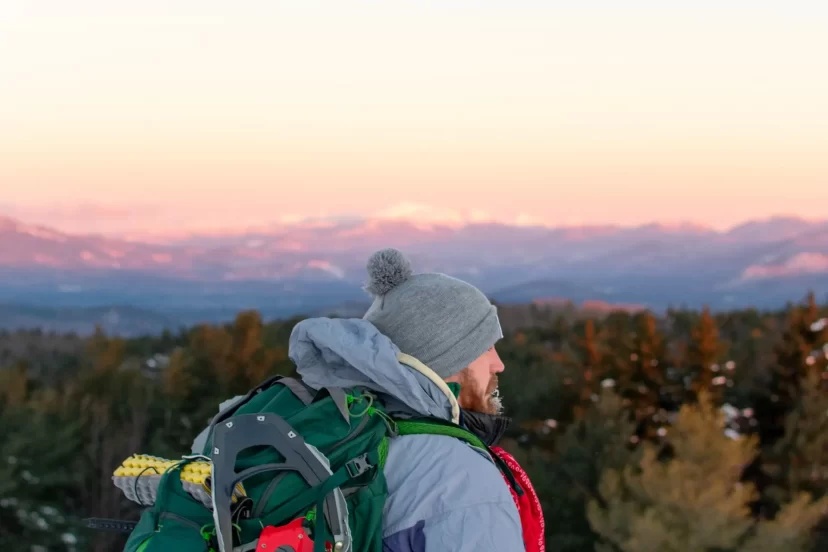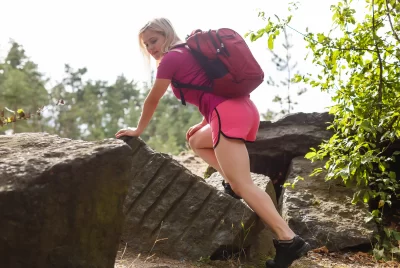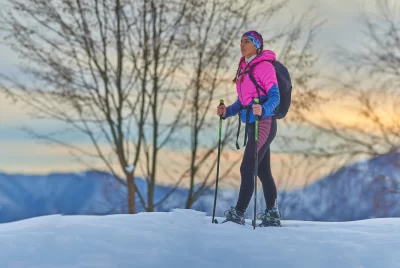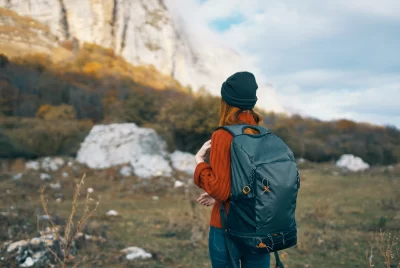Hiking Tips for Beginners: How to Get Started
Hey there! As a hiking enthusiast and nature lover, I’m thrilled to share my insights and hiking tips for beginners on how to get started with hiking. Hiking has been a transformative experience for me, allowing me to connect with nature, challenge myself, and discover hidden gems in the great outdoors.
The Beauty of Hiking: Connecting with Nature and Exploring the Outdoors
One of the most incredible aspects of hiking is the opportunity to immerse yourself in the beauty of nature. From breathtaking vistas to serene forests, every step on the trail unveils new wonders waiting to be explored. Hiking provides a much-needed escape from the hustle and bustle of daily life, allowing you to rejuvenate your mind and soul.
Preparing for Your First Hike
Selecting the Right Trail: Finding the Perfect Fit for Beginners
When starting out, it’s crucial to choose a trail that matches your fitness level and experience. Look for beginner-friendly trails with well-marked paths and moderate difficulty. National parks and local nature reserves often offer trails suitable for beginners, providing a great introduction to hiking.
Researching Trail Difficulty and Distance: Setting Realistic Expectations
Before embarking on your hike, take some time to research the trail’s difficulty and distance. Knowing what to expect will help you prepare physically and mentally. Start with shorter trails and gradually increase the distance as your fitness improves. Remember, it’s better to enjoy the journey than to push yourself too hard and risk injury or exhaustion.
Checking Weather Conditions: Staying Safe and Comfortable
Always check the weather forecast before heading out for a hike. Dress appropriately for the conditions and bring extra layers in case the weather changes. Don’t forget to pack essentials like sunscreen, a hat, and sunglasses to protect yourself from the sun’s rays. Being prepared will ensure you stay comfortable and safe throughout your adventure.
Essential Gear for Beginner Hikers
Choosing the Right Footwear: Comfort and Support for the Trail Ahead
Investing in proper footwear is essential for a comfortable hiking experience. Opt for sturdy hiking boots or trail running shoes that provide ample support, traction, and protection for your feet. A good pair of shoes will prevent blisters, ankle sprains, and other foot-related discomforts, allowing you to fully enjoy the hike.
Hiking Boots vs. Trail Running Shoes: Which One Suits You Best?
Hiking boots are ideal for rugged terrains and provide excellent ankle support. On the other hand, trail running shoes are lighter and more flexible, suitable for less challenging trails. Consider your hiking preferences and the terrain you’ll be exploring to determine which option suits you best.
H4: Importance of Proper Socks: Keeping Your Feet Happy on the Journey
Never underestimate the power of good socks! Invest in moisture-wicking and cushioned hiking socks to keep your feet dry and comfortable. Avoid cotton socks as they tend to retain moisture, leading to blisters. Quality socks will reduce friction, prevent blisters, and make your hiking experience much more enjoyable.
Layering Your Clothing: Staying Comfortable in Changing Weather
Dressing in layers is key to staying comfortable during your hike, especially when the weather is unpredictable. Layering allows you to adjust your clothing according to the temperature and activity level. Start with a moisture-wicking base layer, add insulation for warmth, and top it off with a waterproof and breathable outer shell to protect against rain and wind.
Base Layers, Insulation, and Outer Shells: The Art of Layering
Your base layer should be made of lightweight and moisture-wicking materials like synthetic or merino wool. This layer will keep you dry by wicking away sweat from your body.
For insulation, consider a fleece or down jacket that provides warmth without adding much bulk. These materials are lightweight and offer excellent insulation properties.
Finally, an outer shell such as a rain jacket or windbreaker will protect you from the elements. Look for a waterproof and breathable option to keep you dry from rain and allow sweat to escape.
Don’t Forget the Rain Gear: Protecting Yourself from Unexpected Showers
Even if the weather forecast predicts a clear day, it’s always wise to carry rain gear with you. A compact and lightweight rain jacket and rain pants can save you from getting soaked in case of an unexpected downpour. It’s better to be prepared and stay dry than to let rain ruin your hiking experience.
Selecting a Backpack: Carrying Essentials Without Feeling Overloaded
A well-fitting backpack is essential for comfortably carrying your hiking essentials. Look for a backpack with adjustable straps and a hip belt to distribute the weight evenly. Consider the capacity based on the length of your hikes—smaller backpacks for day hikes and larger ones for overnight trips.
Capacity, Fit, and Features: What to Consider When Choosing a Backpack
When choosing a backpack, consider the capacity based on the duration of your hikes. A 20-30 liter backpack is sufficient for day hikes, while longer trips may require 40-60 liters or more.
Ensure a proper fit by adjusting the shoulder straps, hip belt, and chest straps. A well-fitted backpack will prevent strain on your back and shoulders.
Look for features like multiple compartments, side pockets for water bottles, and a rain cover to protect your gear in wet conditions.
Safety First: Hiking Etiquette and Tips
Hiking Etiquette: Respecting Nature and Fellow Hikers
Respecting both nature and fellow hikers is crucial to maintain the serenity and sustainability of hiking trails. Familiarize yourself with hiking etiquette to ensure an enjoyable experience for everyone.
Leave No Trace Principles: Minimizing Your Impact on the Environment
Follow the principles of Leave No Trace (LNT) to minimize your impact on the environment. Pack out your trash, stay on designated trails, and avoid disturbing wildlife. Leave nature as you found it, preserving its beauty for future generations.
Yielding the Right of Way: Navigating Trails and Interactions with Others
When encountering other hikers on the trail, practice proper trail etiquette. Uphill hikers generally have the right of way, so step aside and let them pass. Offer a friendly greeting and be considerate of others’ space and privacy.
Navigating the Trail: Reading Maps, Using Compasses, and Following Markers
Navigating the trail is an essential skill for every hiker. Learn how to read trail maps, use a compass, and follow trail markers to stay on the right path.
Basic Map Reading Skills: Understanding Symbols and Trail Markings
Become familiar with map symbols and markings, such as contour lines, trailheads, and landmarks. Understanding these will help you navigate and stay on the correct trail.
Using a Compass: Orienting Yourself and Finding Your Way
A compass is a valuable tool for navigation. Learn how to use it to orient yourself, determine direction, and find your way back to the trailhead if needed. Practice your compass skills before heading out on more challenging hikes.
Physical Preparation: Getting Fit for Hiking
Conditioning Your Body: Building Endurance and Strength
Hiking can be physically demanding, especially on longer or more challenging trails. It’s essential to condition your body to build endurance and strength.
Cardiovascular Exercises: Improving Stamina and Lung Capacity
Engage in cardiovascular exercises such as walking, jogging, cycling, or swimming to
improve your stamina and lung capacity. These exercises will help prepare your body for the cardiovascular demands of hiking. Aim for at least 30 minutes of aerobic activity, three to four times a week, gradually increasing the intensity and duration as you progress.
Strength Training: Targeting Key Muscle Groups for Hiking
Strength training is crucial for building the muscle strength and endurance needed for hiking. Focus on exercises that target your lower body, such as squats, lunges, step-ups, and calf raises. Additionally, incorporate exercises for your core, back, and upper body to improve overall stability and balance on the trail.
Hiking Techniques and Tips for Beginners
Starting Slow: Gradually Increasing Distance and Difficulty
As a beginner, it’s important to start slowly and gradually increase both the distance and difficulty of your hikes. Begin with shorter, easier trails to get accustomed to hiking and build confidence. Over time, gradually progress to longer and more challenging hikes as your fitness level improves.
Listening to Your Body: Recognizing Fatigue and Knowing When to Rest
Pay attention to your body’s signals during a hike. Fatigue is normal, but it’s important to recognize when you need to rest. Take breaks when needed, hydrate, and refuel with snacks to maintain your energy levels. Pushing yourself too hard can lead to exhaustion and increase the risk of injuries.
Proper Foot Placement: Preventing Injuries and Ensuring Stability
While hiking, focus on proper foot placement to avoid injuries and ensure stability on the trail. Take care to step on stable surfaces, avoid loose rocks or slippery areas, and use trekking poles for added support and balance. This will help prevent falls and minimize the strain on your joints.
Taking Frequent Breaks: Hydration, Snacks, and Enjoying the View
Remember to take regular breaks during your hike to hydrate and refuel your body. Carry an adequate supply of water and nutritious snacks like trail mix, energy bars, or fruits to keep your energy levels up. Don’t forget to pause and appreciate the beautiful views along the way—hiking is not just about reaching the destination but enjoying the journey.
Conclusion
Embracing the Adventure: Discovering the Joy of Hiking
Embarking on a hiking journey as a beginner can be both exciting and challenging. By following these hiking tips for beginners and embracing the adventure, you’ll be well on your way to becoming an avid hiker. Remember to start with manageable trails, invest in the right gear, respect nature and fellow hikers, and gradually build your endurance and strength. Let hiking be your gateway to exploring the wonders of nature and finding solace in the great outdoors.
FAQs (Frequently Asked Questions)
Q1: Is hiking suitable for all fitness levels?
Absolutely! Hiking offers a wide range of trails suitable for different fitness levels. Start with beginner-friendly trails and gradually progress to more challenging ones as you build your fitness and confidence.
Q2: What should I pack for a day hike?
For a day hike, essentials include proper footwear, layered clothing, a backpack with water and snacks, a map or trail guide, a first aid kit, sunscreen, bug repellent, a hat, and a rain jacket. It’s important to pack light but ensure you have everything you need for a safe and comfortable hike.
Q3: Can I go hiking alone as a beginner?
While hiking with a companion is generally recommended, it is possible to go hiking alone as a beginner. However, it’s essential to choose well-marked trails, inform someone about your plans, and take necessary precautions for your safety.
Q4: How can I prevent blisters while hiking?
To prevent blisters, wear moisture-wicking socks made of synthetic or merino wool. Properly break in your hiking shoes before embarking on longer hikes. Additionally, consider using blister-prevention products like moleskin or specialized blister bandages.
Q5: Are there any hiking safety tips I should know about?
Some important hiking safety tips include staying hydrated, following trail markers and signs, carrying a map and compass, informing someone about your hiking plans, being aware of wildlife, and practicing Leave No Trace principles to minimize your impact on the environment.
In conclusion, hiking is a wonderful way to connect with nature, challenge yourself physically and mentally, and embark on memorable adventures. By following these tips and embracing the joys of hiking, you’ll be well-equipped to embark on your first hiking journey. So pack your gear, put on your hiking boots, and get ready to explore the breathtaking beauty that awaits you on the trails. Happy hiking!




